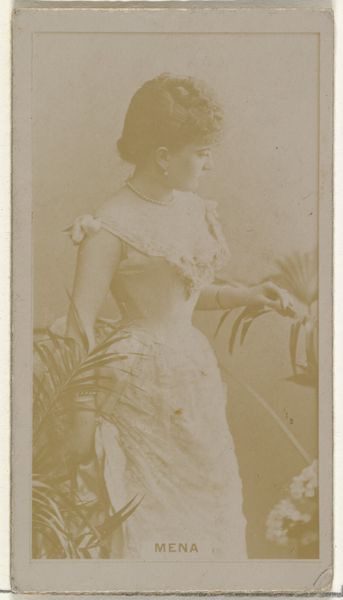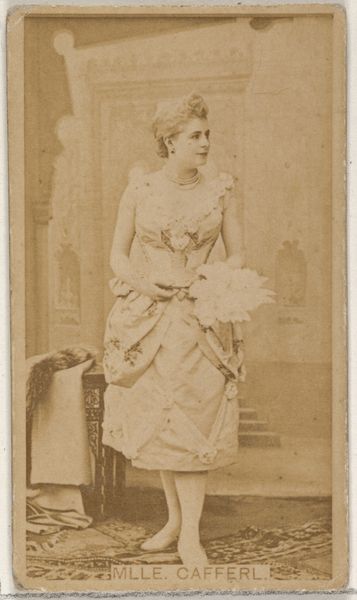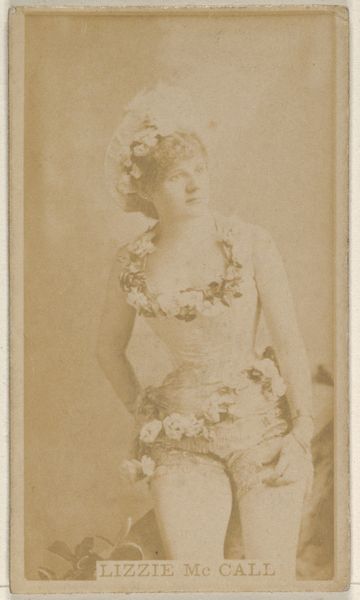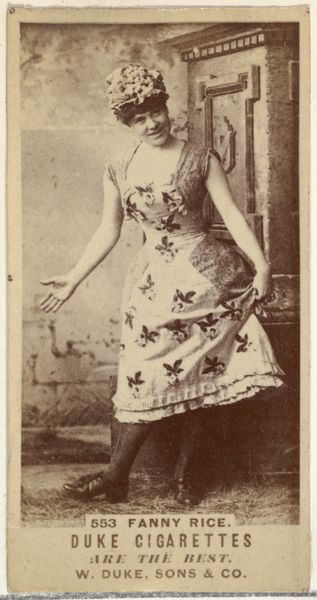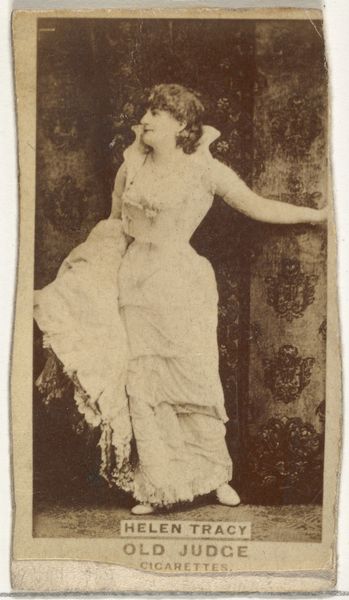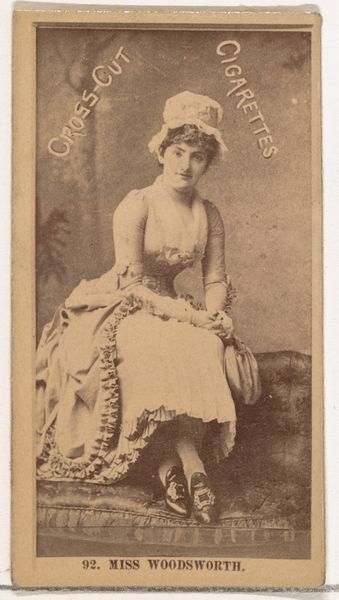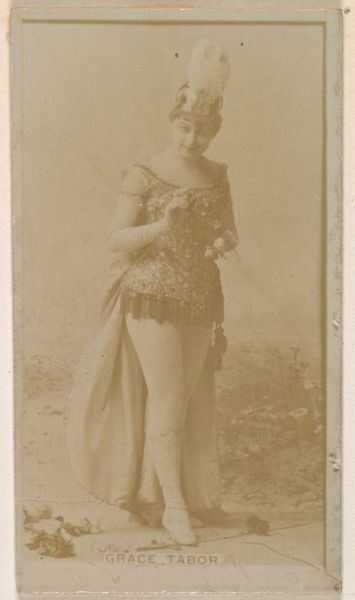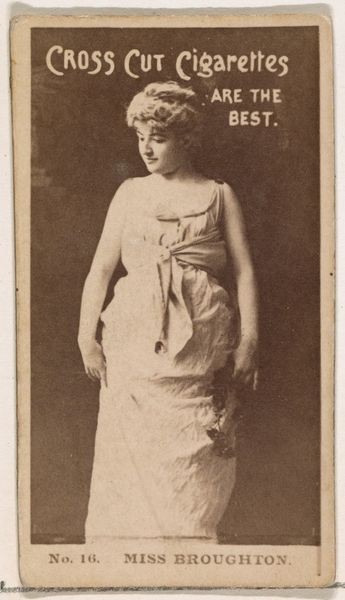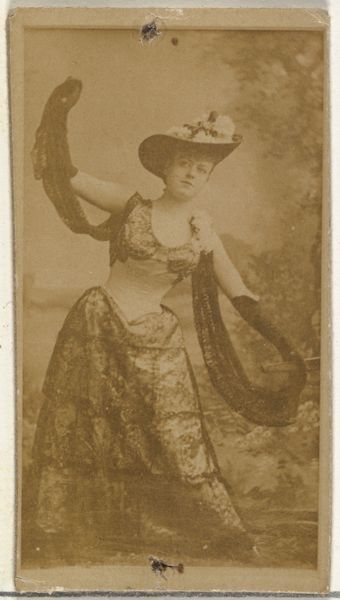
Miss Bepoir, from the Actresses series (N203) issued by Wm. S. Kimball & Co. 1889
0:00
0:00
drawing, print, photography
#
portrait
#
drawing
# print
#
photography
#
pencil drawing
#
genre-painting
Dimensions: Sheet: 2 5/8 × 1 3/8 in. (6.6 × 3.5 cm)
Copyright: Public Domain
Editor: So, this is "Miss Bepoir, from the Actresses series" made around 1889 by Wm. S. Kimball & Co. It looks like a photographic print. What strikes me is the subtle elegance, but it seems intended for mass consumption, given it was a cigarette card. What do you make of it? Curator: It’s fascinating how commercial enterprises like Wm. S. Kimball & Co. leveraged art to sell products. The “Actresses series” reveals a societal fascination with actresses as public figures, blurring the lines between art, celebrity, and commerce. Think about the institutional forces at play. The rise of mass media enabled this wide distribution of images. Editor: So, it's not just a pretty picture but a piece of social history? Curator: Precisely. The card acted as a miniature promotional vehicle. These cards also reveal constraints of the industry at the time. Tobacco companies used images to gain visibility but were at times attacked for the very social forces of moral decay that their own ads fed on. The public display of beauty, fashion, celebrity all contributed to an increasing moral panic. The composition also tells a story; the formal portrait style, likely staged. Where do you think these cards would likely circulate in 1889? Editor: Saloons, tobacco shops… places of leisure, mainly. So it's reinforcing a particular vision of femininity, celebrity, and, ultimately, consumerism in these social settings? Curator: Exactly! And that vision, popularized through these means, became a cultural standard. Consider the power dynamics – a corporation dictating aesthetic values. It encourages a critical look at what images circulate, and how that affects society. Editor: I never considered the role of cigarettes in art history. It shows how connected art is to social structures, not just aesthetics. Curator: Indeed. It makes you rethink the ‘fine art’ world and it is power within our everyday existence, doesn't it?
Comments
No comments
Be the first to comment and join the conversation on the ultimate creative platform.


